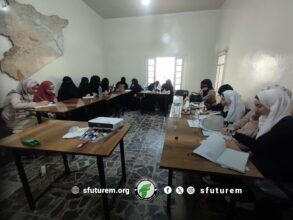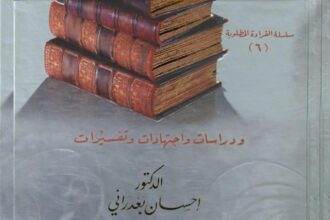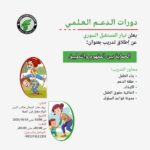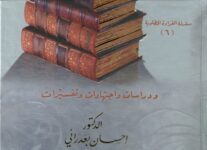Teaching methods and the need for development
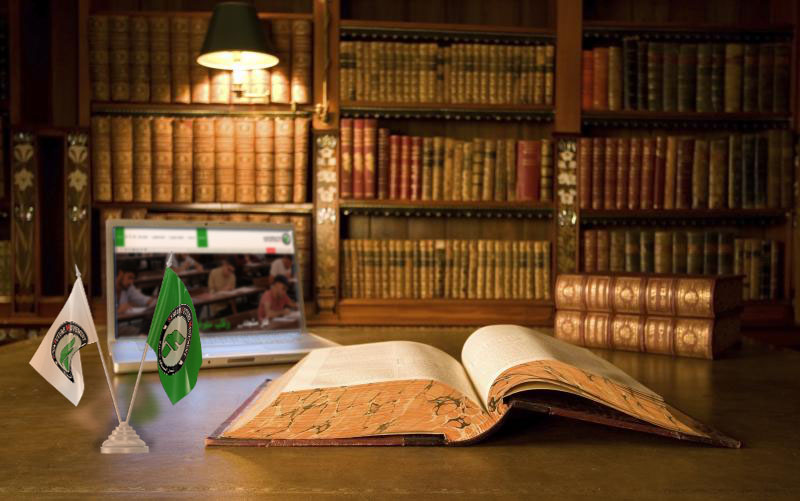
Introduction:
Teaching methods are a set of techniques and strategies used by teachers to transfer knowledge and skills to students, with the goal of facilitating the learning process and making it more effective and enjoyable.
Factors influencing the choice of teaching method:
The choice of the appropriate teaching method depends on many factors, and the teacher may need to combine several methods in one lesson to achieve the best results. Some of the most prominent factors are:
- Lesson objectives: Each objective requires a specific teaching method.
- Lesson content: The nature of the subject matter determines the appropriate method.
- Learner characteristics: Individual differences among students require a variety of methods.
- Available resources: The available material and human resources.
As for the reasons behind this diversity in teaching methods, they include:
- To capture students’ attention: Each student has a preferred learning style.
- To achieve different educational objectives: Every goal requires a different strategy.
- To address individual differences: Students vary in their abilities and interests.
- To develop thinking skills: Encouraging students to engage in critical thinking, creativity, and problem-solving.
The world of education is constantly evolving, so teachers must stay updated with the latest methods and techniques. Evaluation helps the teacher assess the effectiveness of the methods used and adjust them if necessary. Additionally, sharing experiences and knowledge with colleagues contributes to the development of the educational process.
Traditional teaching methods:
Traditional teaching methods are approaches that have been commonly used in education for long periods. These methods typically rely on the teacher as the central figure in the educational process, where they directly transmit information to the students.
Key examples of traditional methods:
- Lecture: The lecture is the most common method in traditional teaching. In it, the teacher explains the topic in detail to the students, often using the board or presentation slides.
- Rote learning and memorization: This method was prevalent in the past and still exists, where students memorize information without deeply understanding it.
- Oral questioning: The teacher asks questions to the students to assess their understanding of the material.
- Homework: Assigning students homework to memorize information and apply it.
- Traditional tests: These typically rely on essay questions or multiple-choice questions to assess students’ levels.
Among the advantages of traditional teaching methods:
- Organization of information: These methods help in organizing and sequencing information logically.
- Provision of basic information: They deliver essential information and key concepts of the subject.
- Ease of application: These methods do not require advanced equipment or technology.
Disadvantages of traditional teaching methods:
- Focus on memorization and rote learning: They do not encourage critical thinking and creativity.
- Lack of consideration for individual differences: These methods do not account for the variations in students’ learning styles and abilities.
- Boredom among students: Traditional methods can lead to student boredom due to the way information is presented.
- Lack of student interaction: They do not promote active student participation or interaction in the learning process.
Why are traditional methods still used?
- Foundation for modern methods: Traditional methods serve as a foundation for building modern approaches, as they provide essential information needed by students.
- Suitable for certain subjects: Some subjects, such as mathematics and science, require detailed explanation.
- Ease of application: As mentioned earlier, traditional methods do not require advanced equipment or technology.
Despite some advantages, traditional methods alone are insufficient to meet the educational needs of today’s world. In recent years, there has been significant progress in the field of education, with many modern methods emerging that rely on technology and interactive learning. These methods help increase student engagement and improve their understanding of the material.
Modern teaching methods:
Modern teaching methods focus on providing a stimulating and encouraging environment for critical thinking and creativity. They offer students greater opportunities for participation and interaction in the learning process. These methods aim to develop 21st-century skills such as problem-solving, creative thinking, collaboration, and communication.
Key examples of modern teaching methods:
- Collaborative learning: Students are divided into small groups to work together on problem-solving or project completion, fostering teamwork and cooperation.
- Project-based learning: Focuses on giving students practical projects to implement, helping them apply theoretical knowledge in real-world scenarios.
- Inquiry-based learning: Encourages students to ask questions and find answers themselves, developing critical thinking and inquiry skills.
- Flipped learning: The roles of student and teacher are reversed, with students watching lectures at home and engaging in interactive activities in class.
- Simulation-based learning: Uses simulation techniques to provide realistic learning experiences, such as simulating scientific experiments or life situations.
- Game-based learning: Educational games are used to make the learning process enjoyable and motivating.
- Blended learning: Combines traditional and online learning, offering greater flexibility for both students and teachers.
- Self-directed learning: Encourages students to manage their own learning, increasing their independence and responsibility.
Among the most important advantages of modern teaching methods:
- Increased participation and interaction: They encourage active student involvement in the learning process.
- Development of 21st-century skills: They help in developing critical thinking, creativity, problem-solving, and collaboration skills.
- Making learning more enjoyable, engaging, and stimulating.
- Adaptation to individual differences: These methods allow students to learn in ways that match their abilities and interests.
Key challenges facing the implementation of modern teaching methods:
- Lack of resources: Implementing these methods may require additional resources such as technology and educational programs.
- Teacher training: Teachers need continuous training to keep up with these new methods.
- Infrastructure: Schools may need to update their infrastructure to provide a suitable environment for applying these methods.
Modern teaching methods are a powerful tool for improving the quality of education and meeting the needs of 21st-century students. However, successful implementation requires collaboration between teachers, administrators, parents, and students.
Differences between traditional and modern teaching methods:
1. Role of teacher and student:
- Traditional: The teacher is the center of the educational process and the primary source of information, while the student’s main role is listening and memorizing.
- Modern: The teacher acts as a guide and facilitator, encouraging students to discover knowledge on their own and participate in building knowledge.
2. Teaching style:
- Traditional: Relies on lectures, rote memorization, and focuses on delivering ready-made information.
- Modern: Uses diverse methods such as discussion, teamwork, problem-solving, and project-based learning, promoting critical and creative thinking.
3. Role of technology:
- Traditional: Technology plays a minimal role, and traditional tools such as blackboards and books are often used.
- Modern: Relies heavily on technology, utilizing computers, the internet, and interactive educational software.
4. Student evaluation:
- Traditional: Primarily based on written tests that measure the student’s ability to memorize information.
- Modern: Uses a variety of tools, such as projects, portfolios, and presentations, assessing the student’s ability to apply knowledge and solve problems.
5. Focus on the learner:
- Traditional: Focuses on the content itself and does not take individual differences among students into account.
- Modern: Focuses on the learner’s needs and abilities, striving to meet the unique needs of each student, Modern teaching methods are better suited to today’s demands, helping prepare generations capable of facing future challenges. However, this does not mean that traditional methods have lost their importance; rather, they should be integrated with modern methods to achieve the best results.
Teaching Methods Between General and Specific:
This distinction between teaching methods as a general system or specific to a particular subject is very important in the field of education. Therefore, it can be said that both approaches are valid—general and specific methods. To clarify this further, let’s look at it from two perspectives:
Shared Foundations:
- Critical Thinking: Regardless of the subject, all modern methods encourage the development of students’ critical thinking skills, such as analyzing and evaluating information.
- Collaborative Learning: Teamwork and cooperation among students are fundamental elements in most modern methods, regardless of the subject.
- Effective Use of Technology: Most modern methods rely on technology as an essential tool for learning.
- Active Learning: Modern methods promote active student participation in the learning process rather than merely listening to the teacher.
Subject-Specific Customization:
- Sciences: Scientific subjects require practical experiments, the use of laboratories, and simulation programs, which demand specific teaching methods.
- Mathematics: This subject requires extensive hands-on practice and problem-solving, and may involve the use of specialized computer programs.
- Languages: Language teaching focuses on speaking, listening, reading, and writing, and may use methods such as project-based learning or chatting with native speakers.
- Humanities: These subjects encourage discussion and dialogue and may use methods like case studies and text analysis.
It can be said that modern teaching methods provide a general framework, but their application varies from one subject to another. Each subject has its own specific characteristics and requirements that necessitate particular teaching methods.
However, why is this diversity important?
- To ensure effectiveness: Each subject has its unique nature, and the teaching methods suitable for one subject may not fit another.
- To meet student needs: Every student has a preferred learning style, and varying methods help cater to the needs of all students.
- To achieve learning goals: Each subject has specific educational goals, and selecting the appropriate method helps accomplish these objectives.
For all these reasons, teachers must be aware of the different modern methods and capable of choosing the most suitable one for each subject and group of students.
Schools of Teaching Methods:
There are schools of teaching methods, though not in the traditional sense of “school.” Instead, they are groups of theories and educational practices that adopt a specific approach to the teaching process. Each “school” provides a general framework for understanding how students learn and how they can be taught more effectively.
Examples of some teaching method schools:
- Constructivism: This school focuses on learners building their own knowledge through interaction with their environment.
- Behaviorism: It emphasizes that learning occurs through interaction with the environment, with rewards and punishments playing a role.
- Humanism: This school highlights the importance of emotions and social needs in the learning process.
- Critical pedagogy: It focuses on empowering students to think critically and analyze information independently.
As for the reasons behind the existence of different schools of teaching methods, we find that they stem from several key factors:
- Diversity among students: No two students are alike; they differ in their learning styles, abilities, and interests.
- Advancement of knowledge: Educational knowledge is continuously evolving, leading to the emergence of new theories and teaching methods.
- Variety in academic subjects: The same teaching method cannot be applied across all subjects.
Therefore, if we ask about the importance of understanding different schools of teaching methods, the answer would be:
- Selecting the best methods: It helps teachers choose the methods that best suit their students and the subjects they teach.
- Professional development: It assists teachers in developing their teaching skills by learning about various theories and practices.
- Enhancing the learning process: It helps create a more effective learning environment that caters to students’ needs.
Many universities and institutes offer training programs for teachers on different teaching methods. There are also many short training courses available online. Thus, schools of teaching methods serve as a guide for teachers, helping them choose the best ways to convey information and facilitate the learning process.
Key differences between various educational stages:
- Elementary stage: Focuses on play, sensory experiences, and cooperative learning, using visual and engaging tools.
- Middle school stage: Begins to shift toward abstract and analytical thinking, utilizing more diverse methods like projects and discussions.
- High school stage: Emphasizes preparation for college and the workforce, employing more specialized methods related to different fields of study.
- University stage: Encourages independence and scientific research, utilizing methods such as self-study, research projects, and presentations.
- Postgraduate studies: Focuses on deep research and specialization, using methods like seminars, symposiums, and academic writing.
Reasons for these differences:
- Cognitive development: Students’ cognitive abilities develop differently according to their age groups.
- Educational goals: The goals vary at each stage; for example, the elementary stage focuses on acquiring basic skills, while the university stage emphasizes research and development.
- Interests: Students’ interests evolve as they grow older.
Example:
- Project-based learning can be applied at all stages, but the complexity and duration of projects vary based on the age group.
- Collaborative learning can also be applied at all stages, but cooperative activities differ in nature depending on the students’ maturity level.
Thus, teaching methods must be flexible and adaptable to the needs of each educational stage. By understanding these differences, teachers can create motivating and effective learning environments for all students.
The transition from traditional to modern teaching methods:
The transition from traditional to modern teaching methods represents a significant challenge in many countries, including Syria. This challenge requires the concerted efforts of several parties and overcoming multiple obstacles.
Challenges Facing this Transition in Syria:
- Infrastructure: Lack of the necessary material and technological resources to implement modern methods, such as computers, internet access, and equipped buildings.
- Training: Insufficient training for teachers in using modern technologies and new teaching methods.
- Curricula: Current curricula may not align with modern teaching methods.
- Educational Culture: There may be resistance to change from teachers, administrators, and parents.
- Economic and Political Conditions: Crises affecting Syria directly impact the educational process.
Proposed Solutions to These Challenges:
- Teacher Training:
- a. Organizing intensive training courses for teachers on using modern technologies and active teaching methods.
- b. Providing continuous training programs for teachers to ensure they keep up with developments in the education field.
2. Updating Curricula:
- a. Reviewing and updating curricula to align with contemporary requirements and labor market demands.
- b. Incorporating 21st-century skills such as critical thinking, problem-solving, and collaboration into the curricula.
3. Providing Infrastructure:
- a. Providing the necessary devices and technology for schools, such as computers and internet access.
- b. Equipping schools with the necessary infrastructure to implement modern methods, such as smart classrooms and laboratories.
4. Building Partnerships:
- a. Collaborating with international institutions and NGOs to obtain financial and technical support.
- b. Involving the local community and the private sector in supporting the educational process.
5. Changing Educational Culture:
- a. Organizing awareness campaigns about the importance of modern education and its impact on students’ futures.
- b. Involving parents in the educational process and encouraging them to support modern methods.
6. Starting Pilot Projects:
- Implementing modern methods in some schools as pilot projects to evaluate their effectiveness and identify challenges.
7. Leveraging Technology:
- a. Using e-learning platforms and smartphone applications to facilitate the learning process.
- b. Utilizing multimedia resources such as videos, images, and animations to make learning more engaging.
The challenges facing Syria are unique, but through collaborative efforts and the adoption of innovative solutions, significant progress can be made in the field of education, improving opportunities for future generations. It remains essential that the transition to modern methods be gradual, taking into account local conditions and available capacities. Additionally, providing necessary support to teachers during the change process and periodically assessing the impact of modern methods on learning outcomes is crucial.
Successful Examples of Modern Teaching Methods Worldwide
In recent years, there has been a significant transformation in the field of education, with innovative teaching methods being adopted to enhance the learning experience and improve student achievement. Here are some notable examples:
- Finland: Finland is renowned for its advanced educational system that emphasizes active learning and creative thinking. Finnish students enjoy more free time at school and are encouraged to explore and engage in self-directed learning.
- Singapore: Singapore has successfully raised its students’ performance levels in international assessments by focusing on critical thinking skills and problem-solving.
- Estonia: Estonia heavily relies on technology in education, with computers and tablets widely used in classrooms, facilitating a modern learning environment.
These examples demonstrate the potential of adopting modern teaching methods and the importance of tailoring educational approaches to the specific needs of students and contexts.
Conclusion:
Improving teaching methods in Syria is vital for enhancing the quality of education and empowering future generations. Therefore, we recommend the following proposals to the Scientific Office of the Syrian Future Movement (SFM) that we believe could contribute to this development:
Teacher Training
- Ongoing Training Programs: Organize regular training sessions for teachers on the latest educational methods and techniques.
- Specialization: Encourage teachers to specialize in certain areas to enhance their expertise.
- Research and Development: Support research initiatives aimed at developing new and innovative teaching methods.
Curriculum Modernization
- Curriculum Alignment: Regularly review and update curricula to align with contemporary requirements and labor market needs.
- Incorporating Life Skills: Integrate 21st-century skills such as critical thinking, problem-solving, and collaboration into the curriculum.
- Focus on Active Learning: Shift the role of students from passive listeners to active participants in the learning process.
Infrastructure Development
- Technology: Equip schools with computers, internet access, and multimedia learning tools.
- Classroom Design: Create flexible classrooms that encourage interaction and collaboration among students.
- Libraries: Provide well-equipped school libraries with modern books and educational resources.
Building Partnerships
- Universities: Collaborate with universities and colleges to develop teacher training programs and conduct educational research.
- International Organizations: Leverage the expertise of international organizations in the field of education and program development.
- Private Sector: Involve the private sector in supporting educational projects and providing training opportunities for students.
Encouraging Research and Development
- Support for Scientific Research: Allocate budgets to support educational research aimed at improving teaching methods.
- Publishing Research: Encourage researchers to publish their findings to disseminate benefits, with our platform ready to publish any research by independent Syrian authors without obstructive conditions.
- Experience Exchange: Organize conferences and seminars to share experiences between researchers and teachers.
Changing Educational Culture
- Community Awareness: Organize awareness campaigns about the importance of modern education and its impact on future generations.
- Parental Involvement: Engage parents in the education process and encourage their support for modern teaching methods.
- Teacher Appreciation: Recognize the role of teachers and provide them with moral and financial support.
Leveraging Technology
- E-Learning: Utilize e-learning platforms and smartphone applications to facilitate the learning process.
- Multimedia Use: Employ videos, images, and animations to make learning more engaging.
- Artificial Intelligence: Utilize artificial intelligence to personalize education and provide support for students.
The development of the education system is an ongoing process that requires long-term commitment from all stakeholders. By working together, we can build a high-quality educational system that empowers future generations to face the challenges ahead.
Scientific Office
Research Team
Research and Studies Department
Articles
Syrian Future Movement (SFM)
